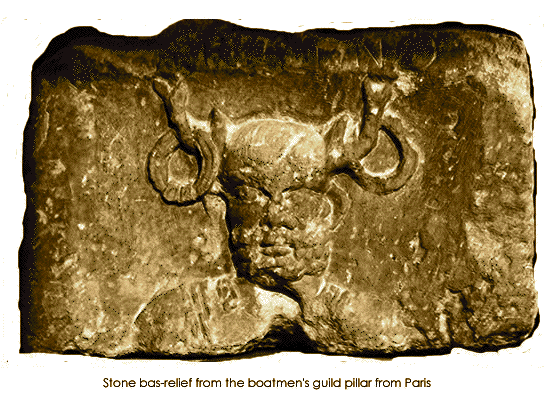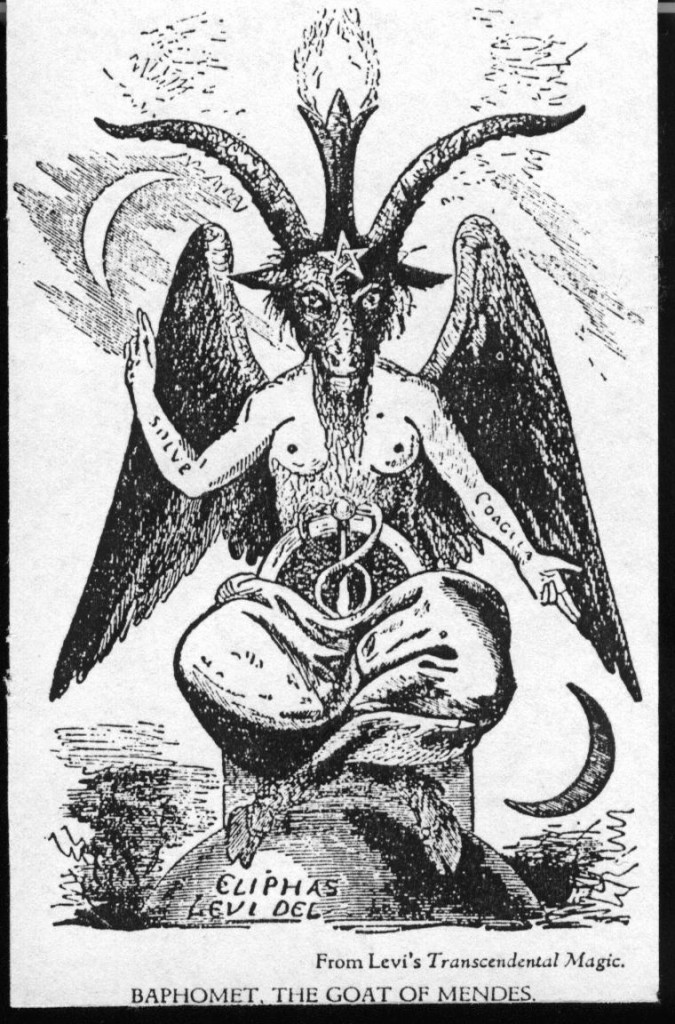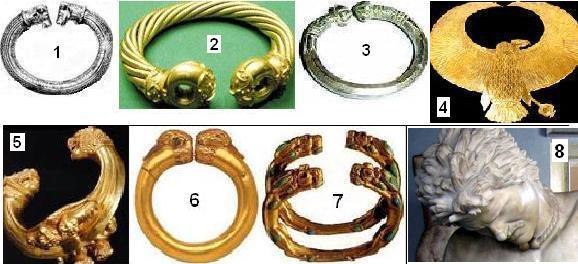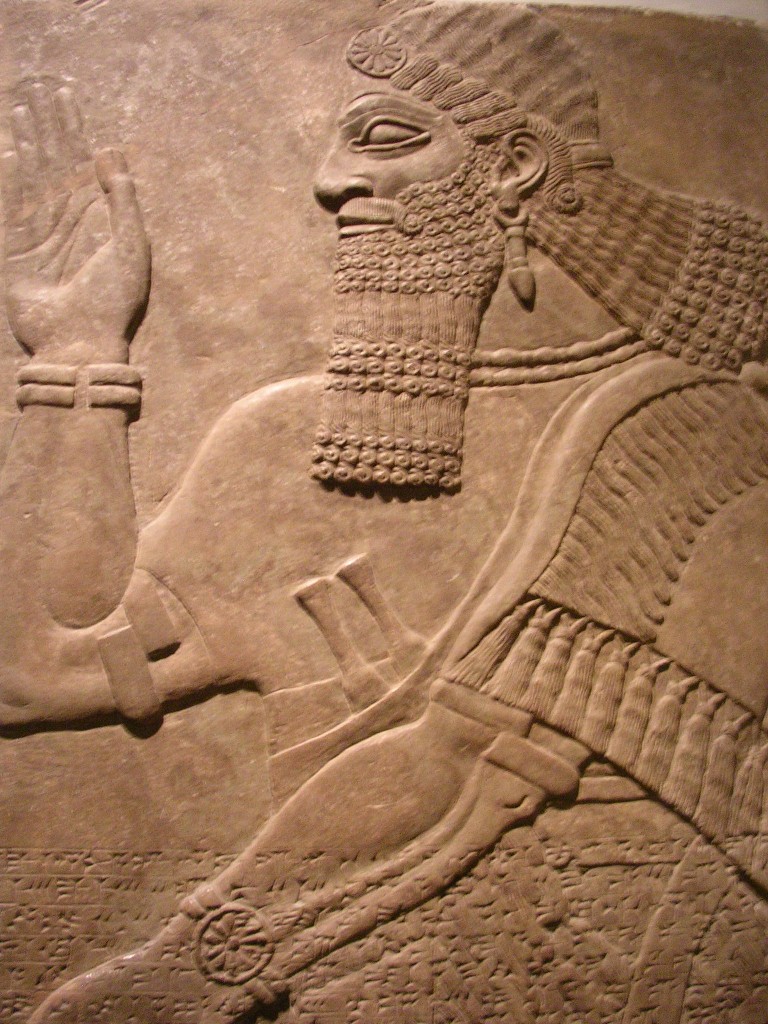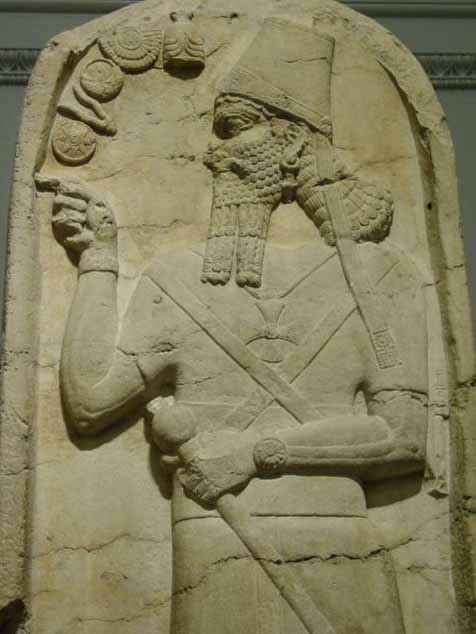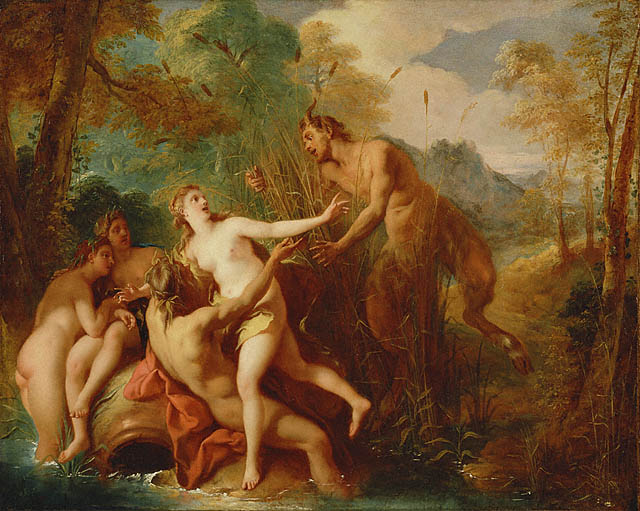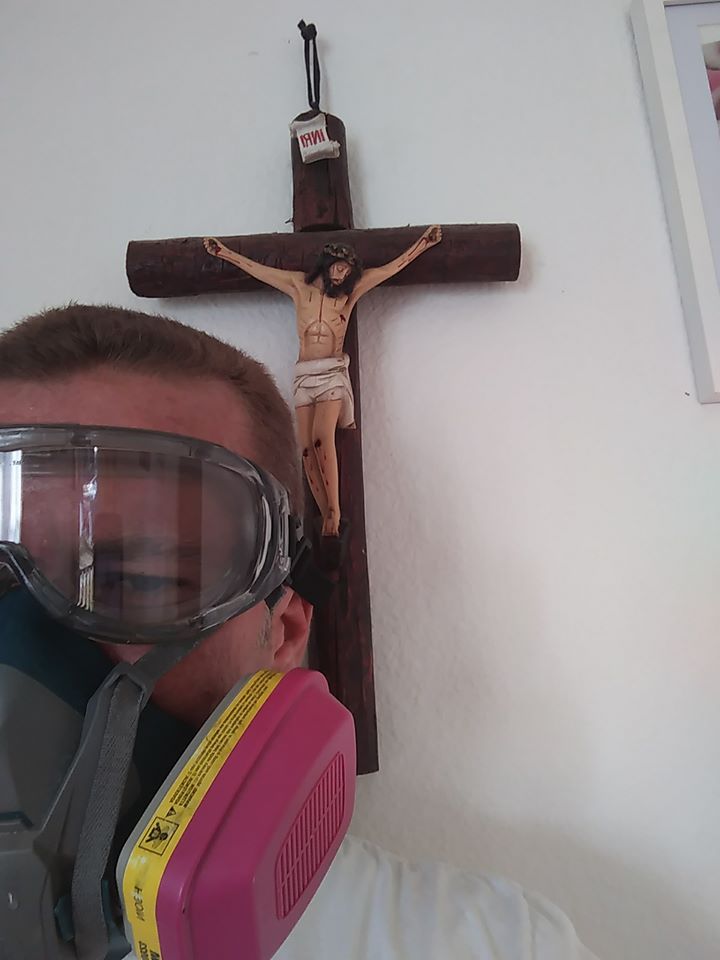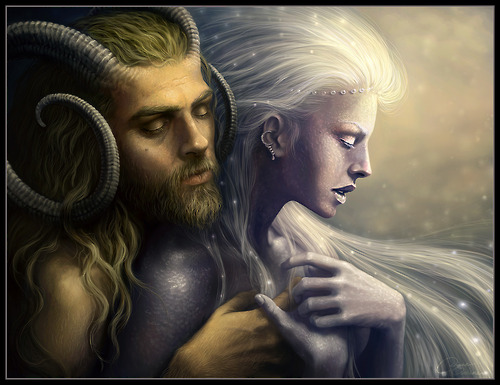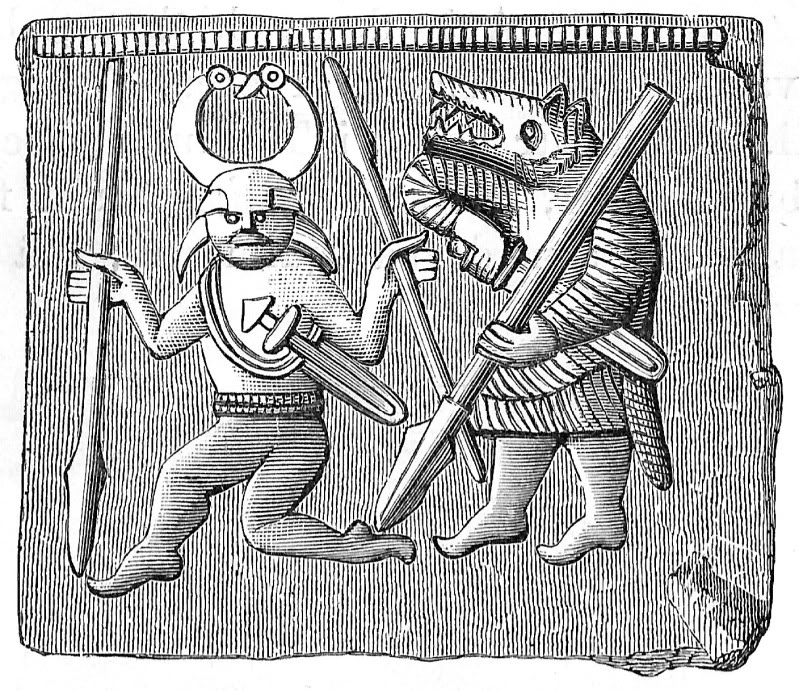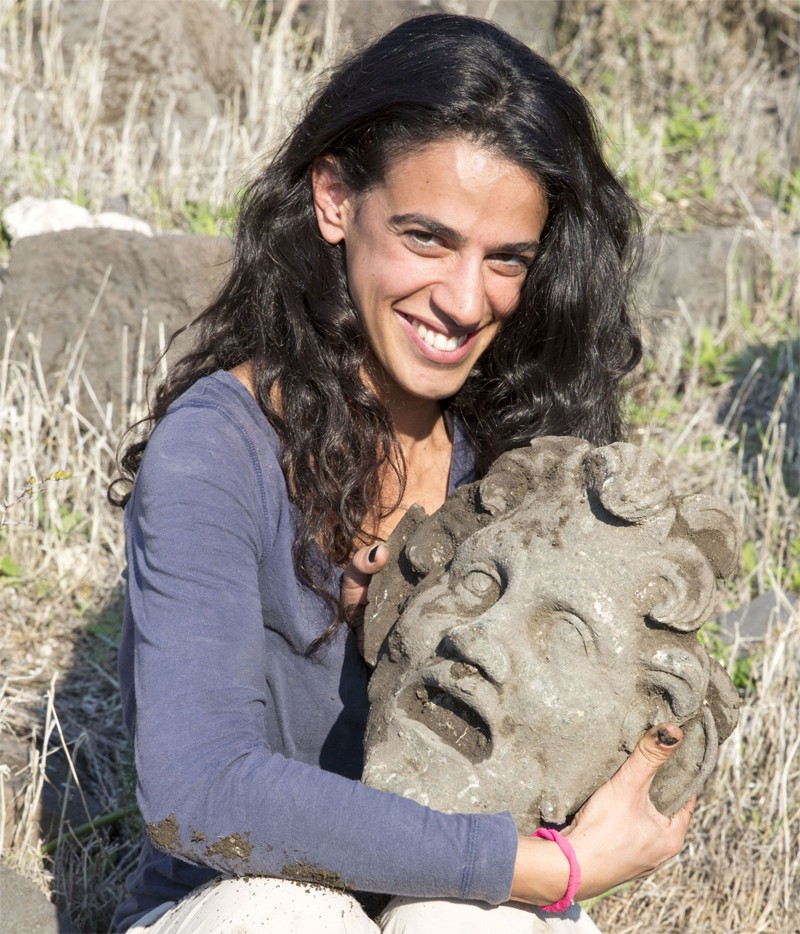The ancient Celts and Druids in the West had worshiped a horned God who went by the names of Cernunnos (KER-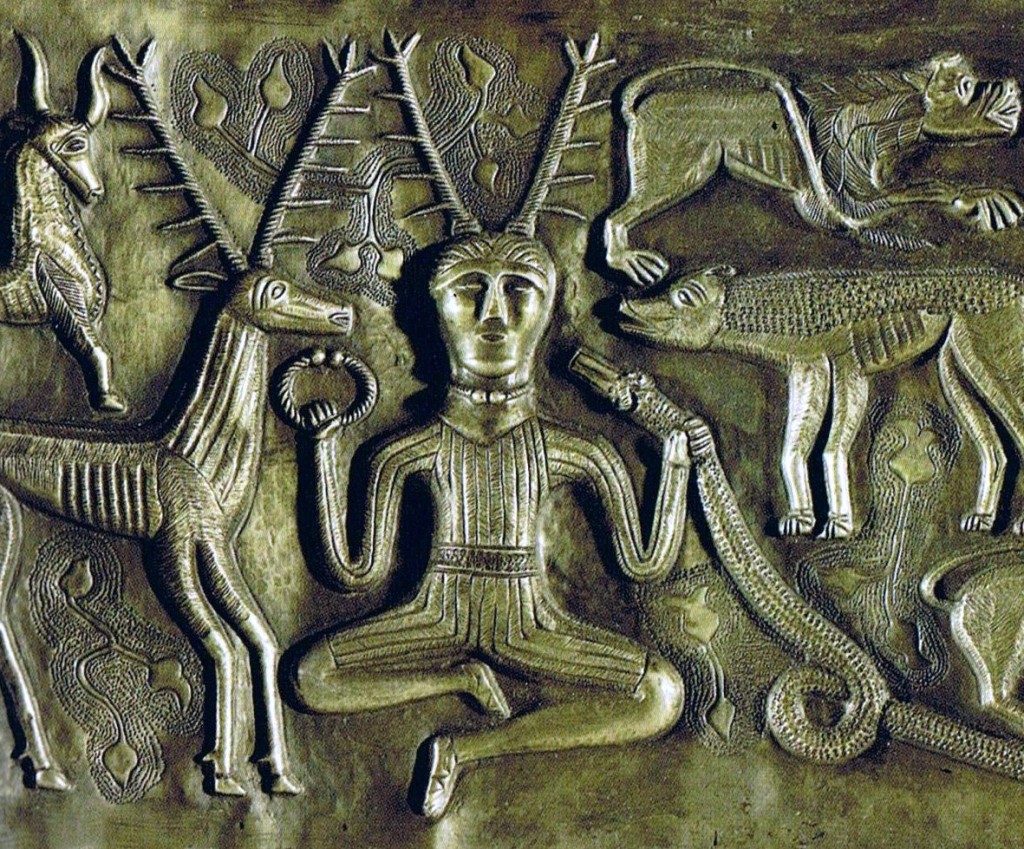 noo-nos) by the Gauls, and in Old Irish literature as Uindos, Herne (Hermes), Hu Gadarn, and Hesus (Jesus). He was known as the most ancient and powerful Celtic deity who was called the “lord of wild and all things.” His sons were said to be Teutates, Esus, Taranis or Taranus who are sometimes referred to as his doubles.
noo-nos) by the Gauls, and in Old Irish literature as Uindos, Herne (Hermes), Hu Gadarn, and Hesus (Jesus). He was known as the most ancient and powerful Celtic deity who was called the “lord of wild and all things.” His sons were said to be Teutates, Esus, Taranis or Taranus who are sometimes referred to as his doubles.
The meaning of Cernunnos in Gaelic and Old English and Irish is the “horned one or he who has horns.” This God was usually depicted in artwork wearing stag antlers and was normally accompanied by his symbols of the stag, ram, bull and holding a horned and spotted serpent or worm.
The earliest known depictions of Cernunnos were found at Val Camonica, in northern Italy, which was under Celtic occupation from about 400 BC. The most famous was also portrayed on the Gundestrup Caldron (pictured above), which is a silver ritual vessel found at Gundestrup in Jutland, Denmark and dating to about the 1st century BC. The name “Jutland” would correspond with the Tribe of Judah who are also known as the Phoenicians and Greek Hellenes from Crete who I have written about extensively in articles such as The First Jews of Crete, and The Masonic Archons of the Tribe of Judah.
Horned Gods, Goddesses, kings and emperors is a common theme you will find all through the history of the world. The horns signify what is known as our ammon’s horn and or hippocampus which is our brain’s memory processing unit. These horns I have written about extensively before detailing that they are ancient symbols of their religion of Gnosis and memory. If you would like to read more about these horned and this ancient science, you can read my previous articles such as Amon – King of Gods and Lord of Thrones , Ammon’s Horn, The Third Eye, and The Science of the Brain’s Third Eye Computer Chip of Enlightenment.
THE HORNED GOD OF IRELAND
Old Irish stories describe Cernunnos under the name of Uindos and as the son of the High King of Ireland named Lugh. As the son of Lugh the High King of Ireland, Cernunnos is no stranger to the battlefield and can protect his forest from ever being enchanted by deities for their evil purposes. He is called a wild hunter, a warrior, and a poet and was considered the God of nature who is the protector of trees, plants and animals.
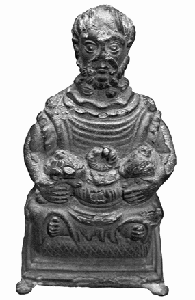 Here is an image to the left of the God of Etang-sur-Arroux with an obvious depiction of Cernunnos. But more of a Druidic modern Irish version and also sitting in a buddah type style. He wears a torc at the neck and on the chest with two snakes (worms) with ram heads encircle him.
Here is an image to the left of the God of Etang-sur-Arroux with an obvious depiction of Cernunnos. But more of a Druidic modern Irish version and also sitting in a buddah type style. He wears a torc at the neck and on the chest with two snakes (worms) with ram heads encircle him.
In the Irish legends of Cernunnos is more than ready to take on whoever wishes to challenge him in battle. He battles his foes using the plants, roots and trees which he controls. Though almost sounding like Cernunnos doesn’t show any mercy, Cernunnos is actually a very gentle creature and even shows respect to his enemies by playing music when they die by his hands.
Cernunnos shows the same exact traits and symbols in common with the patron God of physicians, healers and magicians known as Hermes or Hermes Psychopomp (conductor of souls), the very same title given to the Lord of Death (whom the Celts recognized as Cernunnos) in his union with the Lady of Life. His other name of Herne or Cerne is very close to Hermes.
A similar name to Cain in Irish mythology interconnects to who is known as Tain Bo Cuailnge–Cuchulainn (hound of Cullen), is son of the god of light Lugh, and defender of Ulster, which has come under siege because of the Brown Bull. Cuculainn’s enemies include Morrigan and her sisters, who can change into birds. The death of the white bull (which is actually killed by the Brown Bull) brings about the end of the war. This is an interesting story that appears to be similar to to that of the biblical Cain and Able and the old true story of the Western Phoenicians and Greeks being the white bull under Rome and the possibly their ancient foes who are actually their cousins being that of the Persians and Arabs.
THE HORNED GOD OF PARIS, FRANCE
The horned God can be found in the ancient City of Parisii that we know of today as the French capital of Paris. Around 250 BC, the Celts settled on the site which was to become the ancient city of Lutetia (Lutetia Parisiorum, “Lutetia of the Parisii”). It was at Notre-
The horned god if found on the famous Pillar of the Boatmen (French Pilier des nautes) is a square-section stone bas-relief with depictions of several deities, both Gaulish and Roman. Dating to the first quarter of the 1st century AD, it originally stood in a temple in the Gallo-Roman civitas of Lutetia (modern Paris, France).
These deities on the pillar such as the horned God could be Pan, and there is also the God of Fire, Vulcan, and sacrificial bull we can easily compare with the Minos (Jupiter) bull of Crete. All these same deities can be found at least 500-1000 years before they are found and dated in the West.
On this pillar, Cernonnus is depicted as a man with horns.
The above image almost looks exactly like that of the more modern Knights Templar horned God known as Baphomet.
This image also would be very similar to the more ancient Gods in the East known as Pan in Phoenicia and Greece and as Amon Ra in Egypt. All are found to be horned Gods that are characterized as men with Horns that are the Gods of All Things, and all could be called Sons of Jupiter in which on this same pillar there is a dedication to Jupiter in the form of Iovis Optimus Maximus (“Jove Best and Greatest”). These connections prove they are one in the same deities but with different names and images depending on the country and language who created them.
The name Pillar of the Boatmen is an obvious reference to their race being that of whom the Egyptians called Sea Peoples and the Greeks called them Phoenicians. The first masters of the sea, navigation and world travel. In each place they would land, colonize and live, they would honor their heritage by keeping the same ancient customs and religions and normally only changing their language since they were the exiled children of Babylon. The Parii would be the Western French Branch of their Eastern cousins being that of the Phoenicians and Greeks.
The Parisians (Pariasians) were the followers of Goddess Religion whom they depicted under the name of Isis which is how they get their name of the Parisii. Let me also mention they were the Priesthood of Crete who were placed in charge of protecting the God Zeus who is also known as Jove and Jupiter. Other names they had went by in the East were the Curetes, Corybnates, Telchines, Priesthood of Jupiter Ammon, Pan and Cybele. In the West they were known as Druids and Celts.
They are first mentioned in the Commentaries of Julius Caesar who dwelt in a district on the Seine in the town called Lutetia. The Greek geographer Strabo had written during the reign of Augustus Caesar that the Parisii live round about the Seine, having a city, called Lucotocia (Λουκοτοκία), on an island in the river”. It was here where the Parisii settled, and with them they brought their religion and secret rites of the Goddess from the East, and where they had built a temple of Isis in which you could still find a statue of Isis.
THE HORNED GOD OF BRITAIN
There is even in Britain he is associated with place names with the prefix of Cern from Cerunnos. The similarity between this name and Herne the hunter is unlikely to be coincidence.
THE SYMBOLS OF CERNUNNOS
As you can see in the image to the above right, he wore and sometimes also held what is called a torque, the sacred necklace and bracelet of the Celtic gods and heroes. They were often made of bronze, silver and gold. One of the most famous statues in Rome was the dying Gaul whose naked chiseled physique had only one item adorning it, and that was the torc necklace show in image number 8 below. When the Emperor Augustus had made an alliance with the Celtic Gauls of France, he was presented by the Gauls with a gold torc weighing 100 pounds.
This sacred jewelry was more than just a decoration, it was an ancient healing device that also revealed the secret religious rites of the Celts that we can easily trace to the East. Many ancient statues and hieroglyphs that predate all these found in the West show various God and Kings wearing these necklaces, bracelets and were often accompanied by a rod.
In the Ancient East we can find many examples of the Torc being worn such as the Ancient Assyrian God Ninurta in the 9th and 8th centuries BC. Here he is an image below of the Assyrian God wearing various Torcs around all his extremities such as his neck, arms, wrists, ears and even a headband.
Here is another image not only showing the Torc worn by Ancient Assyrian Gods, but also one of the most famous crosses in all of Europe known as the Knights Templar Cross Pattee.
All these images from the East predate all the various depictions found with the exact same symbology in the West. Further proof that the Western World and culture had come from the East. I will write more about these sacred human healing devices known as the torc that are found all over the world in a future article.
PROOF THAT THE EASTERN PAN WAS IMPORTED INTO IRELAND UNDER THE NAME OF CERUNNOS
For example, the name Cernunnos is actually a Greek word and I have found that this God is simply the Western adaptation of the more ancient well-known Eastern Horned Gods such as Pan, Hermes and Amon Ra. The name Pan means “all” and he was the God of “all things,” just like Cernunnos was as well.
Many of these Celtic deities, their mythology, the artwork and dating of them can easily be connected to the East with the people known as the ancient Phoenicians, Greek Ionians and Hellenes who had almost the same exact religion and pantheon of God and Goddesses.
The earliest depictions of this horned God 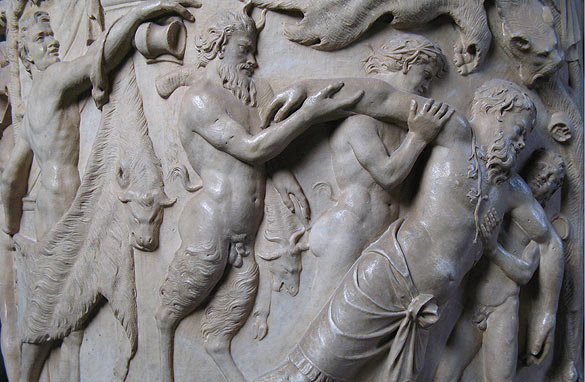 named Pan can be found all over the East in stories and artwork left by the ancient Phoenicians and Greeks which predates the dating of these finds in the West. He was venerated in ancient Crete, Ionia, Greece and in Egypt. One of Pan’s earliest appearance in literature was in the 6th century BC in the ancient poet Pindar‘s Pythian Ode iii. 78, Pan is associated with a mother goddess, perhaps Rhea or Cybele; Pindar refers to virgins worshipping Cybele and Pan near the poet’s house in Boeotia.
named Pan can be found all over the East in stories and artwork left by the ancient Phoenicians and Greeks which predates the dating of these finds in the West. He was venerated in ancient Crete, Ionia, Greece and in Egypt. One of Pan’s earliest appearance in literature was in the 6th century BC in the ancient poet Pindar‘s Pythian Ode iii. 78, Pan is associated with a mother goddess, perhaps Rhea or Cybele; Pindar refers to virgins worshipping Cybele and Pan near the poet’s house in Boeotia.
This history along with the many horned Gods of the East mentioned above and below prove without a shadow of a doubt that Cernunnos was imported by the very same people who had venerated these Gods and their symbols in the East. After all, this was their ancient secret religion of Gnosis that first originated with the Egyptians, then with the Phoenicians, the Greeks, Irish, English, Romans, French, Germans and the Romans that became we know of today as Judaism and Christianity.
WHAT HAPPENED TO THE HORNED GODS?
The early Christian Church under the Catholic Brotherhood of various royal families and empires had made a decision long ago to make war on all Gnostic and pagan Gods of the past simply to maintain control and order over the world’s religions. Part of this process involved various propaganda techniques that the church had mastered such as the demonization and evil connotations of all the ancient Gods and Goddesses of the past. They would adopt a zero tolerance policy to any worship or adoration of these deities whom they always strongly opposed.
Just like Pan in the East became associated with the devil to be forever used as a symbol of the Antichrist and figured in Christian iconography, the Western Pan, Cernunnos would also naturally meet the same fate.
SOURCES:
All my sources are listed above and or linked to in yellow. They can also be easily be found through Google and the Google book archives.

Moe is the founder of GnosticWarrior.com. He is a father, husband, author, martial arts black belt, and an expert in Gnosticism, the occult, and esotericism.


